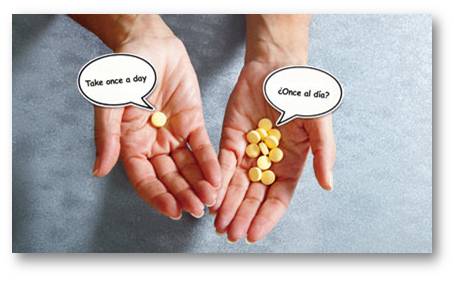The Role of Translation in Clinical Trials
Medical Pharmaceutical Translations • Apr 4, 2016 12:00:00 AM

When we think about outsourcing, it’s usually tied to businesses and call centers. But did you know that an increasing number of clinical trials are also being outsourced?
One of the results of this is that medical translators have to deal with new challenges, on top of the considerable ones their job already entails. Mistakes could mean legal action taken against them or their client – or, far worse, the illness or even deaths of patients. Clinical trials bring on even more pressure: their results have to be as exact as possible. A single badly translated phrase could result in the entire study being scrapped.
Unfortunately, chances for mistranslation are far easier than you might think. For one thing, medical translators may not be dealing with two languages, but with many; several countries have multiple official languages, or minority populations that speak other languages or dialects. This intriguing report reveals that even in a (relatively) simple situation, with only one or two languages involved, one of those languages may not have standardized terms for medical jargon.
And then, of course, there’s culture. As you probably know if you’re a regular reader, the biggest challenges for any translator often stem from cultural differences. Medical translation is no exception. Culture influences and infuses participants’ responses in a surprising variety of ways. For example, the report I cited before includes observations on how pain is reported differently across cultures. The report notes that people from Asian cultures tend to accept pain as part of a condition, and won’t claim to experience it as frequently as people from other cultures. Many Russian patients will also play down their pain, because it’s seen as a sign of weakness.
Details of everyday life in another place are another medical translator “must”. The report includes a story of how a questionnaire for a medical trial in Turkey had to be carefully phrased to ask participants how often they wash their hair, rather than shampoo it, since many Turks use soap instead. Not knowing something like that could mean inaccurate responses and results.
So there’s a lot of pressure on medical translators! Luckily, qualified, quality ones have learned to adapt. Here are some strategies they use for clinical trials:
– Start a translation memory (glossary). Remember that lack-of-medical-jargon problem? Medical translators working in languages that don’t have standard terms often refer or even contribute to a glossary of the accepted or most frequently used translations of particular terms. This helps keep clinical trial material uniform in each country.
– Master medical terminology and the local culture(s). As you can probably imagine from the examples above, any medical translator worth their salt has to know the languages used in a clinical trial, but also the cultures. That’s why you can’t just hire someone who took a few years of a foreign language in school.
– Stop, collaborate, and listen. Even if they’ve got extensive linguistic and cultural knowledge, successful medical translators don’t let it go to their heads. They collaborate with doctors, study participants, and boards of review to make sure their work is correct and comprehensible.
These strategies help, but translating clinical trials isn’t the easiest thing in the world, to put it mildly. The next time I read about a study or research from an international team, I’m going to take a little pause and give thanks to the medical translator or translators that worked on it!
#aiatranslations #clinicaltrialtranslations #clinicaltrials #translations
